| Your browser is not supported. | ||
|
Please browse our site using any of the following options:
| ||
The Best Squid Fishing Strategies
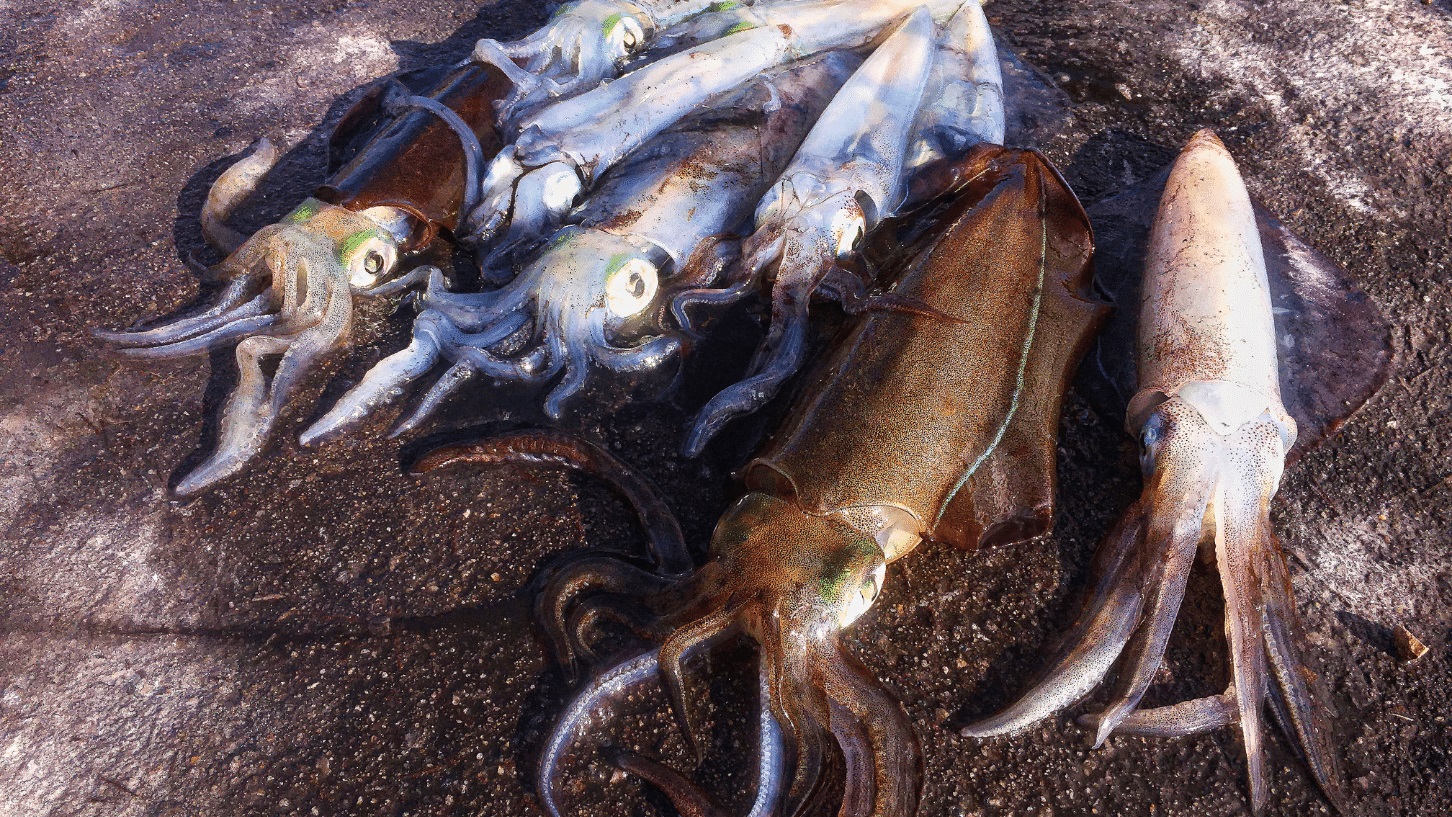
Squid, calamari, cephalopods... whatever you want to call them, there's no denying how fun they can be to catch. Andrew Mensforth shares his secrets to catching squid - one of Australia's most popular recreational species. It seems that the busier I get and the less time I have to spend on the water these days, the more I enjoy fishing for squid. I don't have to burn hours preparing for a squid session, the tackle doesn't need to be high-tech or meticulously assembled, and I don't necessarily have to launch the boat to come home with a decent feed. Catching squid is about as close to grassroots fishing as you can get, which is exactly what we all need from time to time.
Quick Links
- Squid Fishing FAQs
- Squid Fishing Through The Ages
- Squid Habits
- Land-Based Squid Fishing Tips
- Land-Based Squid Jigging Outfit
- How To Catch Squid From A Boat
- What's The Best Squid Jig?
- Squid Cleaning Tip
Squid Fishing FAQs
What is the best time to fish for squid?
The best time to go fishing for squid is most commonly around sunrise, sunset or within an hour before or after high tide. This is because the water will be clearer during high tide and clear water is key to catching squid, which is why fishing for squid is not the best idea within a few days of a big storm as the water will be cloudy.
What is the best bait for squid fishing?
When it comes to fishing for squid, the best type of bait to use is typically squid jigs, snap swivels, speed clips, weighted floats, bait prongs and even glow sticks (as this will attract and bring the squid up to the surface). However, it will depend on what works for you and your fishing style.
What is the best depth for squid?
The best depth to go when fishing for squid is around 4 to 6 feet deep in the water and will provide the optimum depth range when squid fishing. This is because shallow reefs, rubbly flats and weeds are ideal areas for squid to hide and ambush their prey, which is around this depth.
Do you catch squid at high or low tide?
Catching squid is generally more successful during high tide. Squid are known to be more active and accessible to fishermen during high tide as it provides them with more water depth to move closer to the shore. During high tide, the water level rises, covering more of the shoreline and bringing the squid into shallower areas.
Do you use a sinker with a squid jig?
Yes, using a sinker in combination with a squid jig is a common technique for squid fishing. A sinker (also known as a weight) is attached to the fishing line above the squid jig. The sinker's purpose is to add weight to the line, allowing the squid jig to sink more quickly and reach the desired depth where the squid are located.
Squid Fishing Through The Ages
I'm old enough to have fished in an era when chasing squid with multi-prong wire jags (yes, we called them jags, not jigs) baited with a sculpted potato was standard practice. Given the way we go squidding these days, this may sound incredible, but it's true and it worked. The twisted wire shaft on those ancient jags was long enough to accommodate a decent-sized spud, which was whittled down with a veggie knife into a torpedo shape and impaled carefully to sit just above those menacing barbed hooks. Any left-over potatoes from a jetty squid session could be taken home and converted into chips to accompany the calamari catch! From potatoes, we gradually moved on to whole fish baits on our wire jags and also incorporated 'teasers', which undoubtedly boosted the catch rate. Teasers were whole fish (usually small tommy ruffs or mullet) looped onto a handline and allowed to drift around in the general fishing area.
Quite often a teaser would attract several squid, which were slowly dragged into casting range and then picked off with baited jags. It's a system that worked nicely then and still works well today. Fast forward to the modern era, however, and things on the squidding scene have changed dramatically. While it was mainly handlines back in the day, catching squid is now almost exclusively a rod and reel affair - and not just your average rod/reel combination either. You can spend big bucks on specialised 'egi' tackle, and, of course, those bulky, barbed bait jags have long since given way to the modern crop of high-tech prawn imitations (squid jigs).
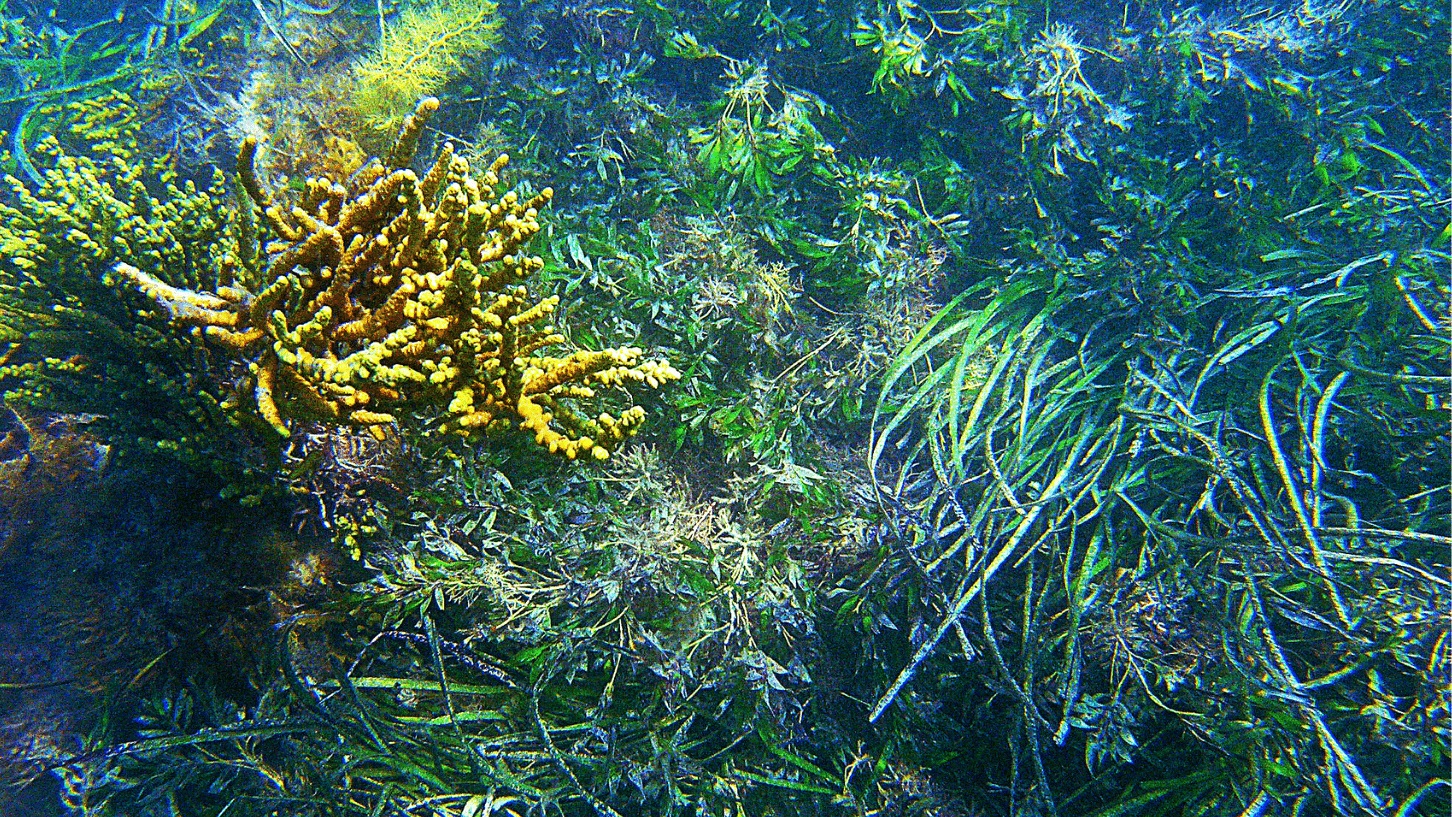
Squid Habits
Before going on to examine the wonderful world of new-age squidding, it's worth taking a brief look at what makes the southern calamari tick. These intriguing creatures have two hearts, a brain that's proportionately far bigger than that of most fishes, the ability to change body colouration instantly, an incredibly fast growth rate, and a surprisingly short life span. They can't smell that well and their eyesight is about ten times as acute as ours. Put simply, squid are pretty much the aliens of the undersea world. Keeping this, or at least some of it, in mind can certainly help when you plan your next squidding safari. Among the most significant of the physiological characteristics mentioned above are sight and smell.
This means that the clearer the water you fish in, the better, and also that baits of natural fish offer no real advantage over artificial ones. Squid hunt mainly on sight, so cloudy water reduces the chance of your jig being seen and attacked. As far as growth rates are concerned, the southern calamari is one of the fastest developers in the cephalopod world. Many of those true monster squid we see from time to time in southern Australian waters may only be 18 months to two years old, and the average ones (carapace length of between 20 to 25cm) are generally between 8 to 12 months. They grow fast, breed prolifically, live life on the edge and die young.
As far as habitat goes, southern calamari are occasionally found in water as deep as 30 metres, but are generally more at home in the 2 to 6 metre depth zone. They prefer to live in and around seagrass meadows, particularly where tape (ribbon) weed and cork weed are prevalent. Despite the obvious and widespread degradation of inshore weed areas, there's still plenty of tape weed around the shores, which is where the majority of our squid fishing takes place. Let's take a look at squid fishing in detail, starting with land-based tackle and techniques before heading offshore.
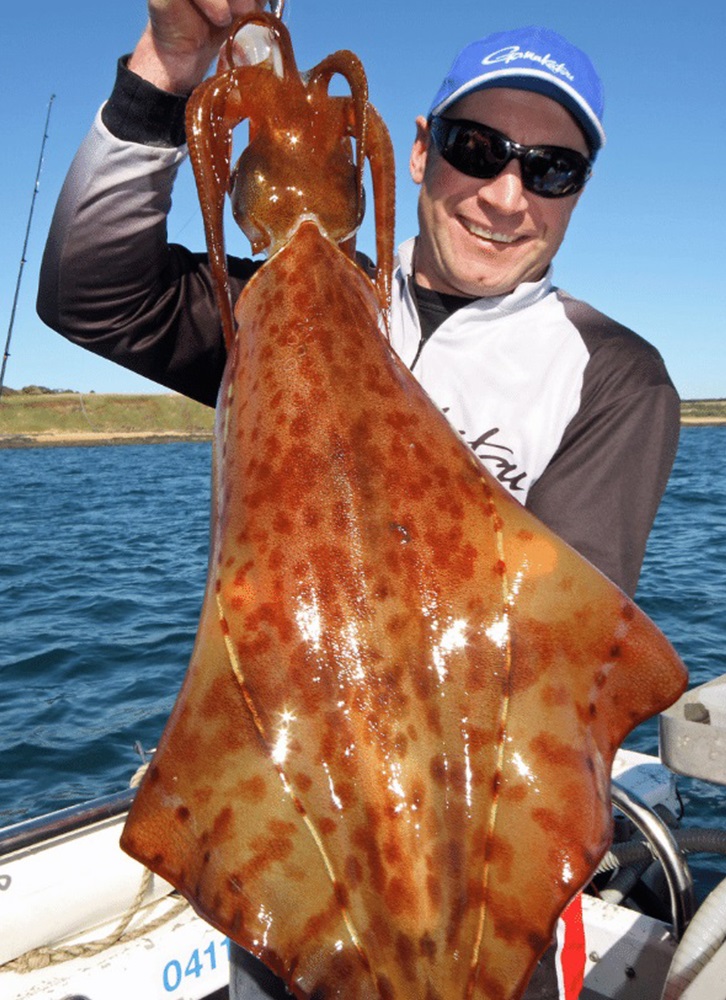
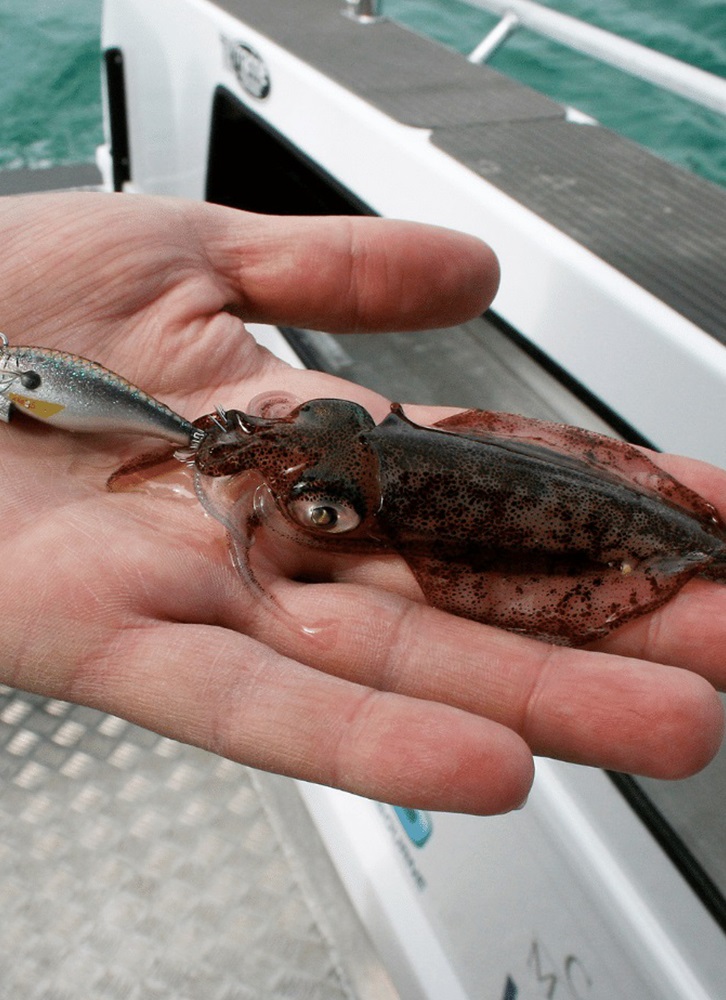
Land-Based Squid Fishing Tips
It's true that many of us would have caught our first squid from a local jetty. Mine came from Grange, west of Adelaide, on that old wire jag/spud combination mentioned earlier, and I reckon I still enjoy jetty squidding more than any other form. Because you don't have the ability to drift around and cover a vast area - as you would out in the boat - you've got to be pretty clever when operating from the confines of a jetty. The calamari are often a bit more wary and competition from other anglers is often greater, so fishing smarter is definitely the way to go. I like to take two outfits on any jetty or rock squidding expedition - one set up with a running float and the other clipped directly to my jig of choice. I'll cast the floating rig and allow it to drift around while actively working the other jig with consistent casts and retrieves. This allows me to cover as much ground as possible, restricted only by the volume of competition from other anglers. Setting up the running float squid rig is pretty straightforward, but I see many people doing it incorrectly, so it's worth explaining in detail.
I like to use a spinning rod around 8ft long with medium action and enough beef in the lower section to deadlift a big squid if I'm lucky enough to hook one. There's nothing worse than trying to winch up the best squid of the day and losing it because the rod simply didn't have sufficient 'grunt' to lift it cleanly. This has happened to me a couple of times in the past, and I now try to avoid it by using rods that can cope with some weight when required. I mostly use 20lb braid on my jetty squidding reels, but this is where monofilament still has a place, in fact, good old-fashioned mono may offer the advantage of injecting some stretch into the system. Lightly hooked squid, and particularly those pinned precariously in the tip of the main tentacle, will often break away on no-stretch braided line, but may stay connected on mono.
As far as the terminal set-up goes, I like to tie a small swivel to the end of the main line, making sure the knot is strong and secure for that possible extra heavy lift. From the swivel, I'll then attach the appropriate length of 20-30lb mono for the squid float to run through. The length of this running line depends almost exclusively on the depth of water in which you are fishing, as well as the height of the local tape or cork weed. It's ideal to have your squid jig riding about 30-50cm above the weed, so if I'm fishing in, say, 2.5m of water, I'll plan to set the jig at a depth of around 2m. The closer to the top of the weed fronds, the better, so you may have to experiment until you get the depth right. Naturally, the longer your running line, the harder it is to cast off a standard-length rod.
After working out the appropriate depth, I'll tie one end of the mono line to the swivel before threading on the running float. I'll then tie a Mustad Fastach clip onto the business end, which facilitates quick and easy jig changes if necessary. Alternatively, you can tie the jig directly to the end of the monofilament, but I find the Mustad clip a definite advantage and always carry a selection in my squidding box. This arrangement causes the squid float to slide down onto the nose of the jig for casting, then allows the jig to sink until the float reaches the top swivel and stops at the prescribed depth.
As I said earlier, this is all simple stuff, but I consistently see jetty triers with their jigs set too shallow or having trouble casting the rig because it's not set up correctly. There are several float styles that work well, but whatever you choose must have a thin internal conduit that will enable the float to run freely between stoppers. Those turnip-shaped polystyrene models are great, and I actually prefer these over the more streamlined torpedo-shaped floats. They certainly don't cast as well, but provide a bit more buoyancy, which helps out with hook-ups as a squid grabs the jig and tries to jet away with it.
With a decent rod and calm conditions, it's easy to cast the floating rig 30m or more, which is usually plenty. With the jig out there, bobbing away beneath the float, you then have a couple of choices - you can close the spinning reel's bail arm and simply wait for a squid to find the jig or, if you have some wind or tide taking the float away from the jetty, leave the bail arm open and allow the jig to stay on the move. I generally prefer the latter option, particularly if there's a bit of breeze to push the float well out into territory that can't be reached any other way. Naturally, with the bail arm open you've got to keep a constant eye on the float. I've had a hooked squid completely spool the reel and almost drag the rod over the jetty rail when fishing with an open bail and not paying proper attention to what was going on out there at the business end! It's a handy trick to have up your sleeve, especially when you're fishing with plenty of other squidders who are happy to keep their floats and jigs closer to the jetty.
If and when a decent squid grabs your jig and submerges the float, it's wise to resist the temptation to wind up any slack and strike as you would when traditional fishing. If that float is down, chances are the squid has hooked itself, and a sudden, violent strike may well dislodge the jig hooks rather than drive them further home. As long as the float is underwater, its buoyancy will exert steady pressure, and it's then up to the angler to maintain that pressure until the squid can be taken from the water with a fluid, positive lift. Quite often you'll hook a squid by either one or both of its 'candles' - the longer lead tentacles it uses for grabbing prey. If it's a double-candle hook-up, chances are you'll be able to lift the squid safely, but in the event of a single-candle connection, successful landing odds are reduced dramatically.
And the heavier the squid, the more chance of having it fall off halfway between the water and jetty railing. If I'm jetty fishing in a location where big squid are a definite possibility, I usually carry a light, single-ring crab net that can be deployed quickly to secure any squid that are lightly hooked or simply too heavy for an easy lift. Alternatively, if you're fishing on a relatively short jetty without too many people, you can walk any really big squid into shore and collect them from the beach. I've done this on a couple of occasions with particularly large specimens I didn't want to risk losing.
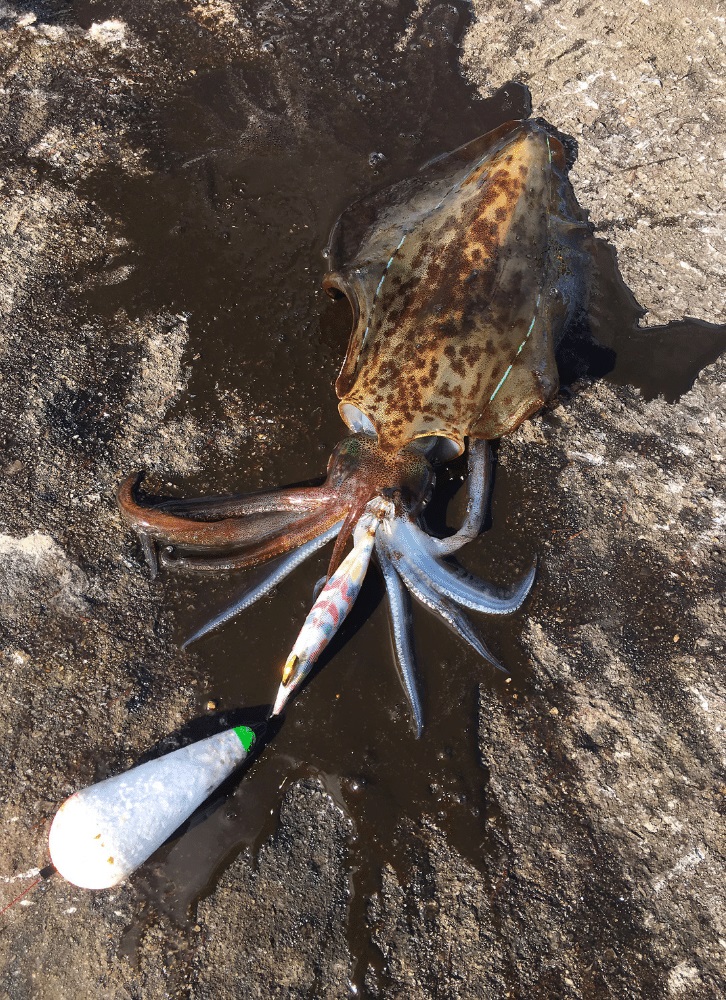
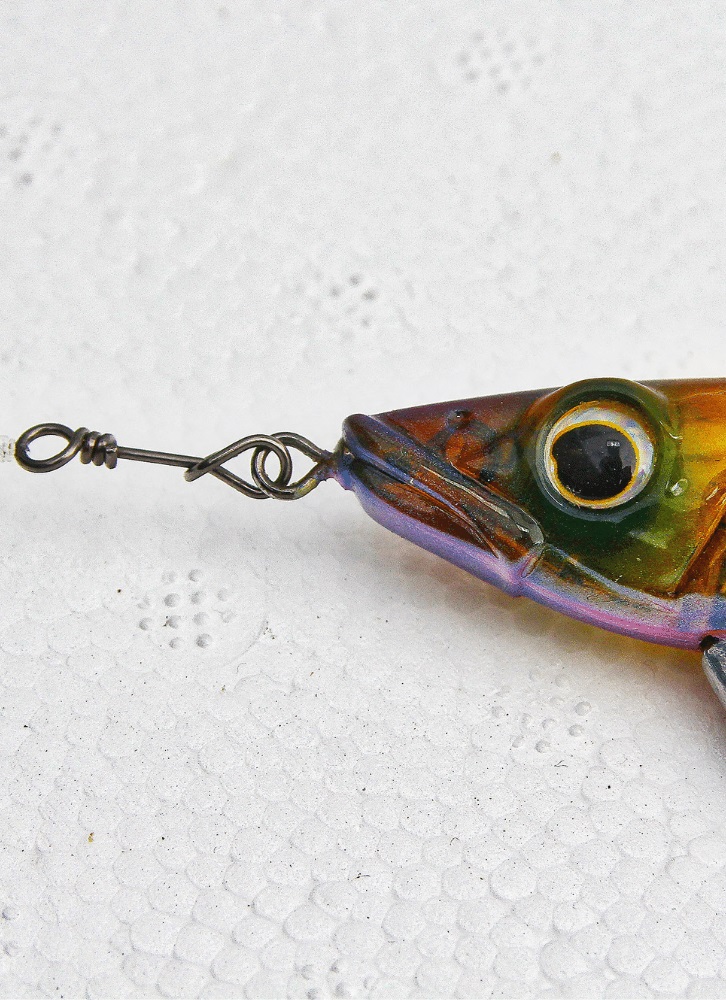
Land-Based Squid Jigging Outfit
My other jetty squidding outfit consists of a slightly shorter (6.5 to 7ft) rod with a 4000 size spinning reel and 15lb braid. To the end of the braid, I'll tie a couple of metres of 20lb monofilament or fluorocarbon (normally using a double-uni knot) and then finish off with a Mustad Fastach clip. This is the outfit I use to cast around while waiting for my floating set-up to do its thing. I'll generally opt for a slightly lighter jig on this outfit (usually a size 2.5), particularly if I'm squidding in fairly shallow water, to minimise snagging. The technique here is simple. Cast the jig a reasonable distance toward accessible weed beds, allow it a few seconds to sink after splashdown, then jig it back with occasional short whips of the rod tip. Getting the retrieve speed and action right is a matter of perseverance and depends generally on both water depth and weed height. Again, the closer to the weed frond tips you can work your jig, the better, but snagging up can be costly if you choose to use expensive jigs. This is why a light line is generally impractical for jetty squidding.
How To Catch Squid From A Boat
Heading out in the boat usually makes the whole squid-catching exercise easier, but not necessarily more fun. Late autumn through winter and early spring is often the most productive period for squidding, but it's possible to catch a feed all year round. I really like June and July for bigger calamari. As long as the inshore water is clear, the wind is down and you have a decent tidal exchange, the chances of a good bag are excellent. Ideally, wind strength needs to be under five knots for the perfect drift.
However, you can squid successfully in more wind by deploying a sea anchor (drogue) that will slow the drift rate significantly. It's important to drift at a speed that will allow you to get your jig down deep enough to drag squid from the weed beds, and this becomes much more difficult in a boat that's moving too quickly. It's also a good idea to fish with the wind behind your cast so that the boat is drifting down on the jig rather than pulling away from it. Most boats will drift side-on to the wind, so fish on the leeward side for best results. Quite often I'll take a second rod out in the boat that's rigged jetty style with a float. This is deployed during each drift and occasionally pulls more calamari than the traditional casting set-up. I do like to make one slight modification to this rig though. Because you're constantly on the drift, the jig set beneath a float usually rides up a bit higher as the boat moves, which isn't ideal.
To counter this, I simply add a 28gm ball sinker above the jig and the job is right. While it's usually simple to lift standard-size squid over the gunwale and into the boat, I like to have a decent landing net on hand. The preferred water depth for boat squidding is generally 2.5 to 5m and, as mentioned, working above ribbon or cork weed is definitely the way to go. Quite often you'll be drifting along for several hundred metres without registering a strike, and then, out of nowhere the calamari will arrive and its hook-ups all around. I like to alter the drift line slightly each time in the hope of covering new ground, and will usually work one area thoroughly before making a substantial move.
What's The Best Squid Jig?
Quite deliberately, I've opted not to enter the debate on squid jig colours, finishes and sizes, as opinions on these vary markedly. The best advice I can offer is to carry a decent range of colours, as there will be occasions when one colour scheme will outfish all others. This is most likely to do with prevailing light conditions, and there's nothing worse than watching a mate pull a dozen calamari on the trot while you catch nothing. I like to pack at least a dozen jig colours, as well as a mix of 2.5, 3.0 and 3.5 sizes - just to cover all bases on a day when the bite is erratic and the calamari are fussier than normal. I also avoid 'dump bin' squid jigs like the plague, as they are rarely balanced properly and regularly come apart after extended use. Pay a bit more for the jigs you buy and I can guarantee your catch rate will be superior.
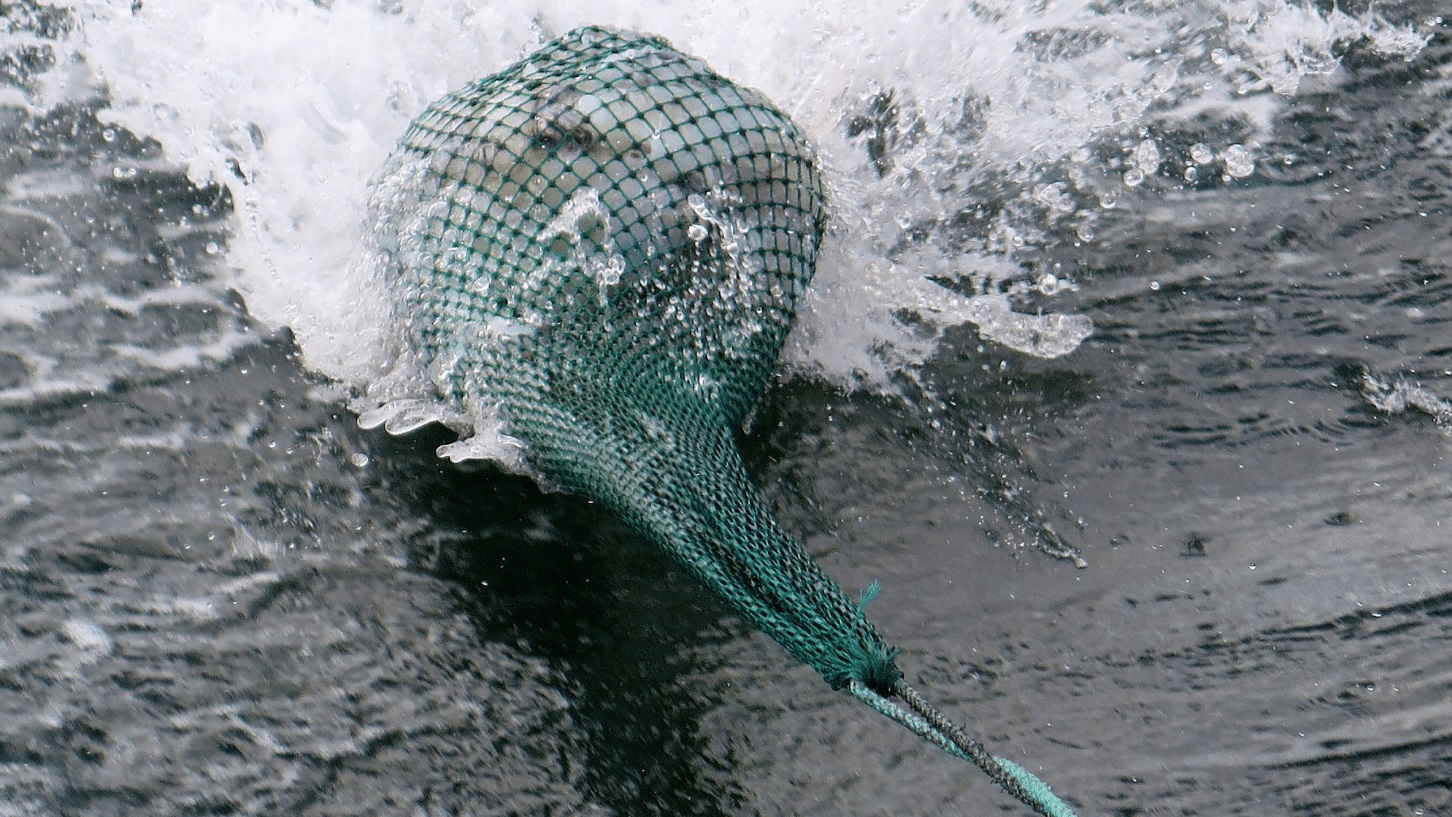
Squid Cleaning Tip
Catching squid in a boat offers one distinct advantage over the land-based alternative, and that's when it comes time to clean the catch. We carry two decent-quality fish scaling bags, which double up as particularly handy squid processing devices. You can simply load your calamari whole into a scaling bag and tow them behind the boat for a couple of minutes, which does a reasonable job of cleaning them up. However, removing the squids' heads first and cutting away the very tip of the mantle with a sharp knife produces a far superior result. Your squid will end up totally ink-free, all of the outer skin is removed and you'll have little, if any, of the internals to deal with at day's end.
The violent tumbling action of the scaler bag seems to tenderise the mantles as well, so it's an option well worth considering. Instead of keeping cleaned squid in traditional tube form and then converting the tubes to rings, I prefer to open them up these days. This enables me to tenderise the mantles with a steak mallet before cutting them into manageable strips for crumbing, battering or using in seafood stir-fries. I've tried tenderising calamari with kiwi fruit, milk, lemon juice and other concoctions, but the steak mallet option is definitely the way to go. Simply give each mantle a gentle going over on both sides to break down the flesh slightly, and it will melt in your mouth.
One of the very best things about catching a heap of calamari is the ability to freeze it and enjoy great meals at a later date. I'm no fan of frozen fish at all, but thawing out a batch of clean squid mantles three or four months after catching them doesn't bother me. In fact, I reckon spending time in the freezer actually makes squid a tad softer without compromising flavour in any way. It really is the ideal seafood to store for lengthy periods. So, while I could still confidently head out with a couple of potatoes, a crude wire jag and a knife to go squidding, there's little doubt that things are quite a bit different on the squid scene today. What definitely hasn't changed, however, is the amount of fun you can expect on a squid mission - and the guaranteed seafood feast to follow!
Try These Amazing Squid Fishing Tips Today
Try out these awesome squid fishing tips today for the perfect way to escape with the family for a fun weekend. Before you head out though, make sure you are fully stocked up on all your fishing gear needs such as fishing lines, fishing rods, fishing reels and much more. Make sure you check out our Adventure Centre for more awesome and helpful fishing tips such as:
- Top 10 Lures For Catching Trout
- Murray Cod Tips & Tricks
- How To Catch A MONSTER Murray Cod
- Picking The Right Cod Reel
Find your local Anaconda store and check out our extensive range of squid jigs and fishing gear to get you ready for your next squid fishing trip.